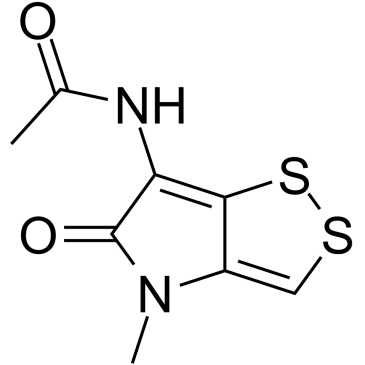Lifetimes of mRNAs for clock-regulated proteins in a dinoflagellate.
Carlos Rossini, Walter Taylor, Thomas Fagan, J Woodland Hastings
文献索引:Chronobiol. Int. 20(6) , 963-76, (2003)
全文:HTML全文
摘要
Both pulsed and continuous applications of the RNA polymerase II inhibitor thiolutin cause a dramatic but reversible loss of bioluminescence and its overt rhythmicity in cells of the dinoflagellate Lingulodinium polyedrum (formerly Gonyaulax polyedra). Such cells remain alive, and the rhythm resumes after an interval, the length of which depends on the concentration of thiolutin used. The period and phase of the resumed rhythm were not systematically altered following such treatments, and the effects were not different at different circadian phases. For three different genes, luciferin binding protein (lbp), luciferase (lcf), and glyceraldehyde-3-phosphate dehydrogenase (gapdh), which are circadian-regulated at the level of translation, the amounts of their mRNAs were determined by Northern blots for times up to 12.5 h following the addition of 1.5 microM thiolutin. Consistent with previous reports that their abundances do not change with circadian time, their levels remained high for several hours after thiolutin addition, but then did diminish.
相关化合物
| 结构式 | 名称/CAS号 | 分子式 | 全部文献 |
|---|---|---|---|
 |
硫藤黄素
CAS:87-11-6 |
C8H8N2O2S2 |
|
Condensin targets and reduces unwound DNA structures associa...
2015-01-01 [Nat. Commun. 6 , 7815, (2015)] |
|
Thiophene-degrading Escherichia coli mutants possess sulfone...
1990-10-01 [Appl. Environ. Microbiol. 56(10) , 3179-85, (1990)] |
|
Mapping of two transcription mutations (tlnI and tlnII) conf...
1980-01-01 [Mol. Gen. Genet. 180(3) , 609-15, (1980)] |
|
The transcriptional inhibitor thiolutin blocks mRNA degradat...
2008-02-01 [Yeast 25(2) , 85-92, (2008)] |
|
Thiolutin-resistant mutants of Salmonella typhimurium.
1982-10-01 [Antimicrob. Agents Chemother. 22(4) , 541-7, (1982)] |